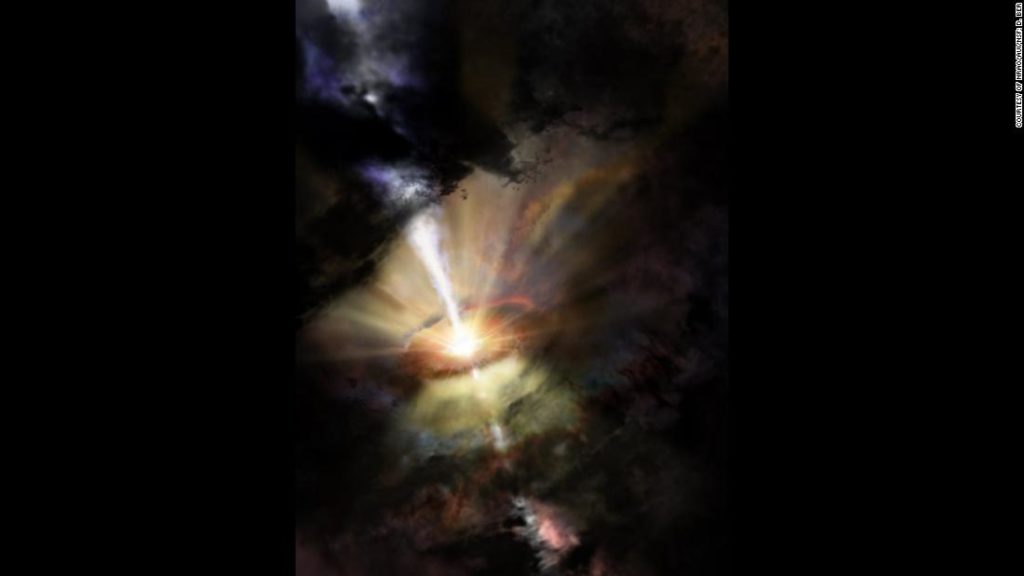
By some coincidence, astronomer Christina Williams recognized a black out hint of light that drove her to the disclosure of a mythical galaxy.
The University of Arizona astronomer saw the sparkling mass in new information from the Atacama Large Millimeter Array in Chile. In any case, something didn’t coordinate. The light was alone in a territory without a known system.
“It was very mysterious because the light seemed not to be linked to any known galaxy at all,” said Williams, lead study creator of a paper distributed Tuesday in the Astrophysical Journal. “When I saw this galaxy was invisible at any other wavelength, I got really excited because it meant that it was probably really far away and hidden by clouds of dust.”
Without importance to, Williams had discovered the impressions prompting a huge cosmic system from the beginning of the universe 12.5 billion years back. This implies the light took that long to arrive at Earth.
The researchers compared it to happening upon a lot of impressions having a place with a legendary beast, similar to the Yeti. This is on the grounds that as of not long ago, because of an absence of information, stargazers didn’t realize they could exist.
The light was likely brought about by dust particles that were warmed by the stars as they framed inside a cosmic system. In any case, the residue mists themselves darkened the stars, which basically made the world itself undetectable from our view.
“We figured out that the galaxy is actually a massive monster galaxy with as many stars as our Milky Way, but brimming with activity, forming new stars at 100 times the rate of our own galaxy,” said Ivo Labbé, study co-creator at the Swinburne University of Technology in Melbourne, Australia.
Previously, astronomers had no proof of enormous worlds from the early universe as they framed. Rather, they detected the absolute biggest realized worlds had developed when the universe itself was as yet youthful. There was nothing in the middle of to propose development.
“Our hidden monster galaxy has precisely the right ingredients to be that missing link because they are probably a lot more common,” Williams said.
Given that they found one example of a galaxy like this, presently the astronomers need to decide whether this was a fortunate find or if it’s one of numerous to be found.
“These otherwise hidden galaxies are truly intriguing; it makes you wonder if this is just the tip of the iceberg, with a whole new type of galaxy population just waiting to be discovered,” said Kate Whitaker, study co-creator and partner professor at the University of Massachusetts Amherst.
At the point when NASA’s James Webb Space Telescope launches in 2021, it could be utilized to examine these galaxies further.
“JWST will be able to look through the dust veil so we can learn how big these galaxies really are and how fast they are growing, to better understand why models fail in explaining them,” Williams said.
Disclaimer: The views, suggestions, and opinions expressed here are the sole responsibility of the experts. No Insta Daily News journalist was involved in the writing and production of this article.